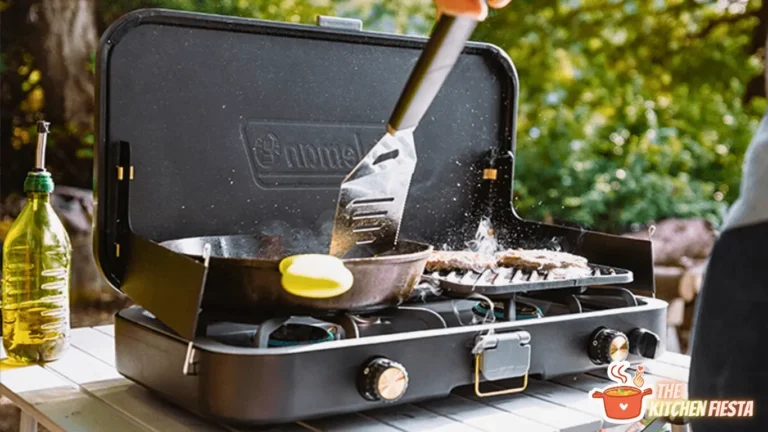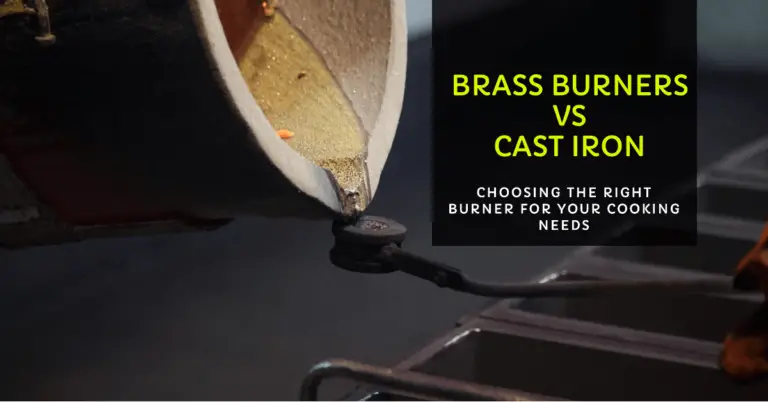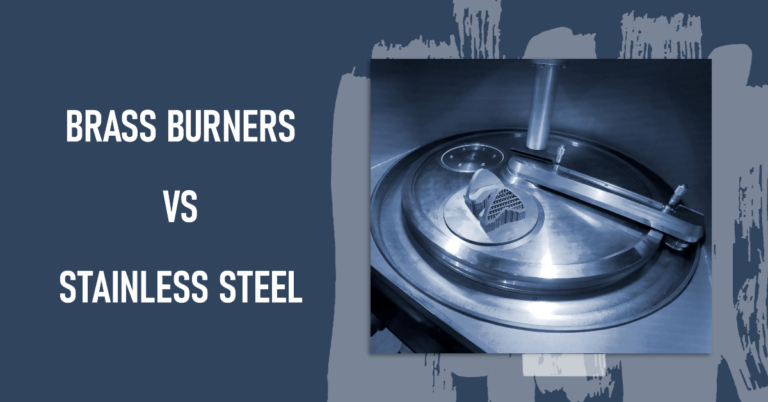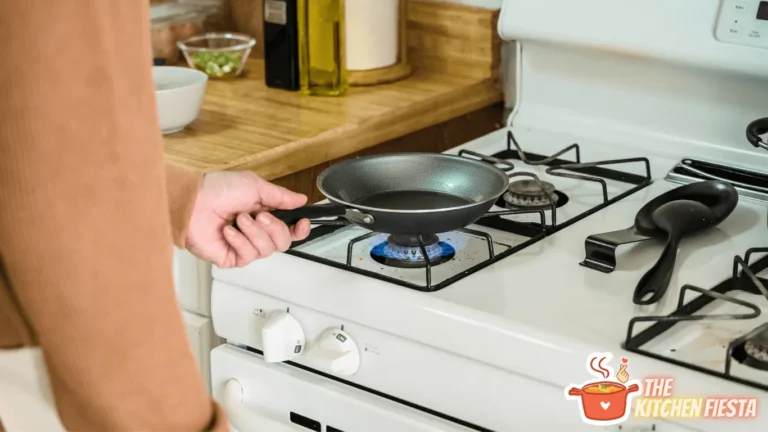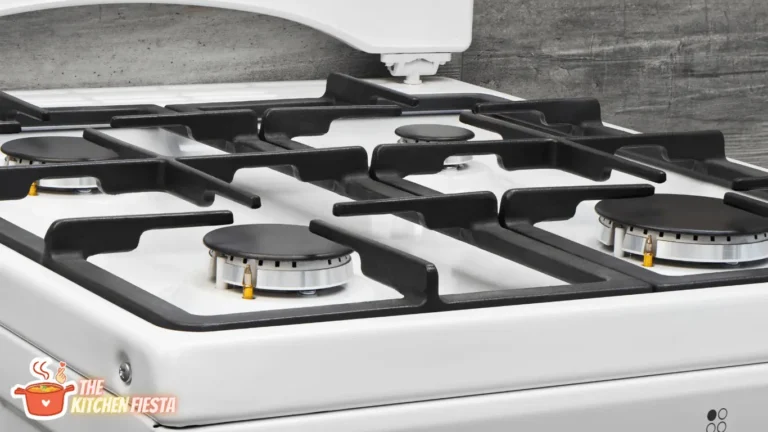How To Fix Orange Flame On Gas Stove?
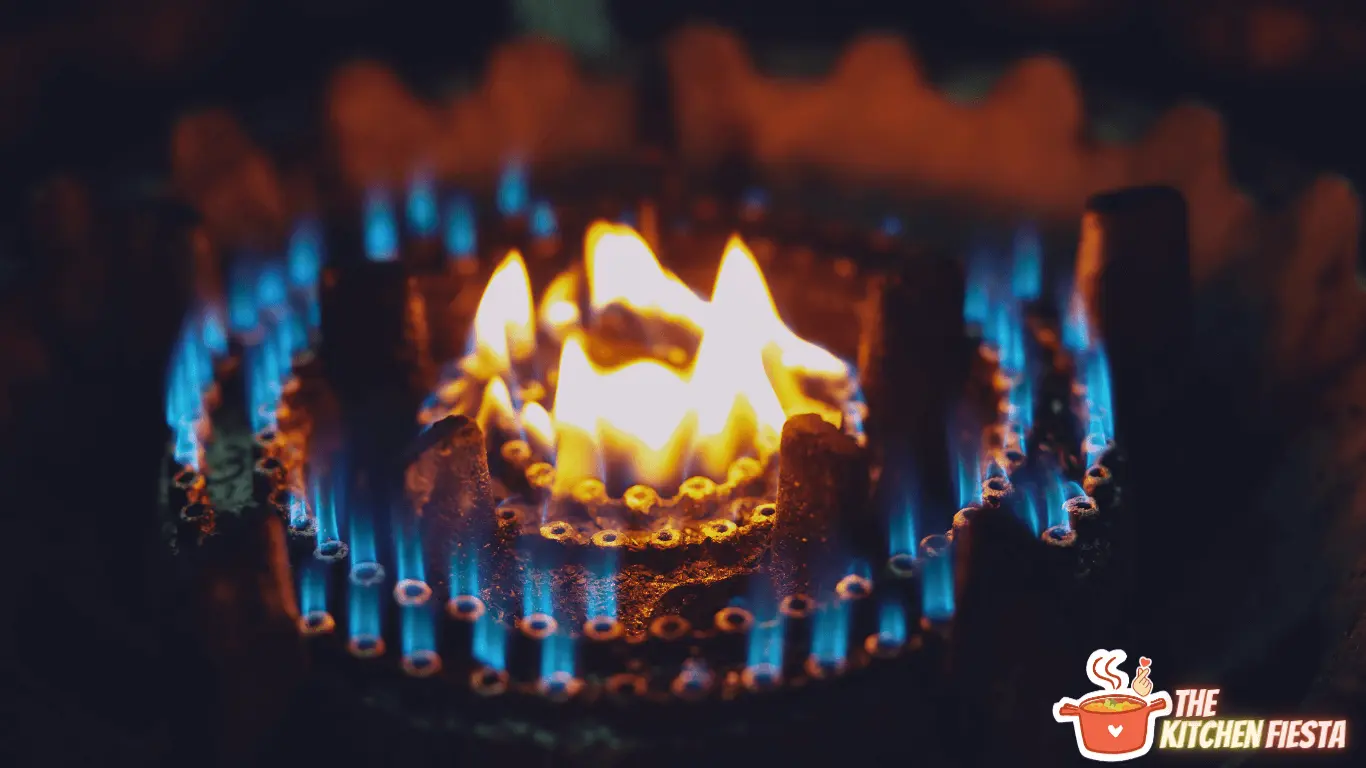
An orange flame on a gas stove is not only visually unappealing but can also be a sign of a problem with the stove. Fortunately, fixing this issue is often a simple process that can be done at home. There are several reasons why a gas stove might have an orange flame, ranging from dirty burners to incorrect installation.
Dirty burners are among the most common reasons for an orange flame on a gas stove. Over time, burners can become clogged with grease, food, and other debris, which can cause the flame to burn orange instead of blue. Another reason for an orange flame is poor airflow, which various factors, including a clogged air shutter or a blocked vent, can cause. Incorrect installation or a malfunctioning component can also cause an orange flame.
Understanding Gas Stove Flames
When it comes to gas stoves, one of the most important things to remember is the flame’s color. A properly functioning gas stove should have a blue flame, which indicates that the gas is burning efficiently and cleanly. However, if the flame is orange or yellow, it can be a sign of a problem that needs to be addressed.
There are several reasons why a gas stove flame might be orange or yellow. One common cause is a dirty burner. Over time, burners can become clogged with grease, food particles, and other debris. This can cause the flame to burn inefficiently, resulting in an orange or yellow color. Cleaning the burners regularly can help prevent this problem.
An incorrect gas-to-air ratio is another possible cause of an orange or yellow flame. The flame can become orange or yellow when there is too much gas and not enough air. A malfunctioning gas valve or regulator can cause this. In some cases, adjusting the air shutter can help correct the problem.
It’s also important to keep in mind that the color of the flame can change depending on the type of gas being used. Propane, for example, can produce a slightly yellow flame even when burning efficiently. However, if the flame is a deep yellow or orange, it’s still a sign that something is wrong.
Identifying Orange Flame Issues
It is essential to have a clear blue flame when using a gas stove. However, if the flame is orange, it could indicate a problem. Here are some common issues that can cause an orange flame on a gas stove:
1. Dirty or Clogged Burners
Dirty or clogged burners can cause an orange flame on a gas stove. The debris can restrict gas and airflow, leading to incomplete combustion. To fix this issue, the burners should be cleaned regularly.
2. Incorrect Air-to-Fuel Ratio
The air-to-fuel ratio is essential for proper combustion. If the ratio is incorrect, it can cause an orange flame. This can happen if the orifice used for natural gas differs from liquid propane. Installing the wrong orifice can lead to orange flames. In addition, a damaged air shutter can also cause an incorrect air-to-fuel ratio.
3. Moisture
Elevated humidity can cause an orange flame on a gas stove. This is because moisture can enter the gas line and affect combustion. The gas line should be checked for leaks or damage to fix this issue.
4. Poor Installation
Poor installation can also cause an orange flame on a gas stove. This can happen if the gas line is not properly connected or the burners are not installed correctly. To fix this issue, it is recommended to have a professional inspect the gas stove and make any necessary repairs.
Safety Precautions
When dealing with gas stoves, safety should always be the top priority. Here are some safety precautions to keep in mind when attempting to fix an orange flame on a gas stove:
- Turn off the gas supply: Before attempting any repairs, turn off the gas supply to the stove. This can usually be done by turning the gas valve located near the stove to the “off” position.
- Ventilate the area: When dealing with gas appliances, it is essential to ensure that the area is well-ventilated—open windows and doors to allow fresh air to circulate.
- Wear protective gear: When working with gas stoves, it is recommended to wear protective gear such as gloves, safety glasses, and a mask to avoid inhaling any harmful fumes.
- Use the correct tools: Always use the correct tools when fixing a gas stove. Using the wrong tools can cause damage to the stove or result in injury.
- Follow manufacturer instructions: Always follow the manufacturer’s instructions when fixing a gas stove. These instructions will guide how to make repairs safely.
By following these safety precautions, individuals can help ensure they can safely fix an orange flame on their gas stove.
Basic Troubleshooting
When a gas stove produces an orange flame, it indicates something is not right. The flame should be blue and steady. There are several reasons why a gas stove flame may turn orange, and the good news is that most of these issues can be resolved with basic troubleshooting. Here are some steps to take:
1. Cleaning the Burners
One common reason why a gas stove flame may turn orange is due to dirty burners. Over time, food particles, grease, and other debris can accumulate on the burners, causing partial combustion and an orange flame. To clean the burners, follow these steps:
- Turn off the gas supply to the stove.
- Remove the grates and burner caps from the stove.
- Use a soft-bristled brush or a toothbrush to scrub the burners gently.
- Wipe the burners with a damp cloth to remove any remaining debris.
- Allow the burners to dry completely before replacing the caps and grates.
2. Checking the Gas Pressure
Another reason why a gas stove flame may turn orange is due to low gas pressure. When not enough gas flows to the burners, the flame will turn orange. To check the gas pressure, follow these steps:
- Turn off the gas supply to the stove.
- Remove the grates and burner caps from the stove.
- Locate the gas regulator valve, which is usually located near the back of the stove.
- Use a wrench to loosen the nut on the gas regulator valve.
- Use a manometer to measure the gas pressure.
- If the gas pressure is too low, adjust the gas regulator valve to increase the pressure.
3. Inspecting the Air Mixture
Finally, an orange flame on a gas stove may be due to an improper air mixture. The flame will turn orange when oxygen is not mixed with the gas. To inspect the air mixture, follow these steps:
- Turn off the gas supply to the stove.
- Remove the grates and burner caps from the stove.
- Locate the air shutter, which is usually located near the base of the burner.
- Use a screwdriver to adjust the air shutter, allowing more or less air to mix with the gas.
- Turn on the gas supply and test the flame.
Following these basic troubleshooting steps, most homeowners can fix an orange flame on a gas stove. However, if the problem persists, it may be time to call a professional for further inspection and repair.
Advanced Solutions
If the basic cleaning and inspection methods do not work, a few advanced solutions can help fix the orange flame on a gas stove.
1. Adjusting the Air Shutter
One reason for an orange flame on a gas stove is that the air-to-gas ratio is incorrect. The flame needs a certain amount of oxygen to burn efficiently, and if there is not enough air, the flame may turn orange. The air shutter is a small adjustable opening near the burner that controls the amount of air that enters the burner. Adjusting the air shutter can help fix the orange flame issue.
To adjust the air shutter, follow these steps:
- Turn off the gas stove and wait for it to cool down completely.
- Remove the burner cap and burner head.
- Locate the air shutter near the burner and adjust it using a screwdriver.
- Turn on the stove and observe the flame. If it is still orange, adjust the air shutter again until the flame turns blue.
2. Replacing the Burner
If adjusting the air shutter does not work, replacing the burner is next. A damaged or clogged burner can cause an orange flame on a gas stove. It is important to choose the right replacement burner for your stove model.
To replace the burner, follow these steps:
- Turn off the gas stove and wait for it to cool down completely.
- Remove the grates and burner caps.
- Disconnect the gas line and remove the burner assembly.
- Install the new burner assembly and reconnect the gas line.
- Replace the burner caps and grates.
- Turn on the stove and observe the flame. If it is still orange, contact a professional for further assistance.
It is important to note that these advanced solutions should only be attempted by someone with experience in gas stove repair or under the guidance of a professional.
When to Call a Professional?
In some cases, fixing an orange flame on a gas stove requires the expertise of a professional. Here are a few situations where calling a professional is recommended:
1. Gas Leaks
If you smell gas or suspect a gas leak, do not attempt to fix the stove yourself. Gas leaks are dangerous and require immediate attention from a qualified professional. Turn off the gas supply to the stove and leave the area. Call a licensed technician to inspect the stove and repair the problem.
2. Complex Repairs
If the orange flame problem persists after attempting the simple fixes mentioned earlier, it may be time to call a professional. Complex repairs require specialized knowledge and tools, such as replacing the gas valve or regulator. Attempting these repairs without proper training can be dangerous and may cause further damage to the stove.
3. Outdated or Damaged Stove
If the stove is outdated or has sustained significant damage, it may be time to replace it. A professional can assess the stove’s condition and recommend the best action. In some cases, it may be more cost-effective to replace the stove rather than attempt to repair it.
Conclusion
Fixing an orange flame on a gas stove is essential to ensure optimal performance and safety. The orange flame indicates incomplete combustion, which can result in soot buildup, clogged burners, and longer cooking times.
There are several methods to fix an orange flame on a gas stove, including cleaning the burners, replacing the valve, and employing a specialist. It is crucial to sanitize the burner and double-check that all the burners are cleaned and placed correctly.
Regular maintenance of gas appliances is also essential to avoid warning signs such as the odor of gas or any other strange odors, defective igniters or burners, strange noises, poor control of temperature, and red, orange, or yellow flame. Flames on a gas stove should be blue, indicating complete combustion.
In conclusion, fixing an orange flame on a gas stove is simple but requires knowledge and attention to detail. Following the tips and recommendations provided in this article and conducting regular maintenance, users can ensure their gas stove’s optimal performance and safety.
Frequently Asked Questions
Why is my gas stove suddenly orange?
There could be several reasons your gas stove suddenly produces orange flames. The most common reason is that the burners are dirty or clogged with food debris and must be cleaned. Another reason could be that the gas pressure is too low, which can cause incomplete combustion and result in orange flames. A malfunctioning gas regulator or valve could sometimes be the culprit.
Why is my gas stove flame orange on all burners?
If the flame on all burners of your gas stove is orange, it could be due to a few different reasons. One possibility is that the air-to-gas ratio is off, which can cause incomplete combustion and orange flames. Another possibility is that the gas pressure is too low, which can also result in incomplete combustion. It’s essential to have a professional inspect your gas stove to determine the exact cause.
Does orange flame mean a gas leak?
An orange flame on a gas stove does not necessarily mean that there is a gas leak. However, it could indicate a gas leak if you smell gas with the orange flame. In this case, it’s essential to turn off the gas supply to your home and contact a professional immediately.
How do I fix the orange flame on my gas furnace?
If your gas furnace produces orange flames, it could be due to a dirty or clogged burner. The burner should be cleaned thoroughly to ensure proper combustion. Additionally, it’s essential to have a professional inspect your furnace to rule out any other potential issues.
Why is a Gas Stove Flame Orange?
A gas stove flame can turn orange due to incomplete combustion, meaning the gas is not burning completely. Various factors, including dirty burners, low gas pressure, or a malfunctioning gas regulator or valve, can cause this.
How to Fix the Orange Flame on a Gas Stove?
To fix an orange flame on a gas stove, clean the burners thoroughly to remove any food debris or other buildup. Check the gas pressure to ensure that it’s within the recommended range. If these steps don’t fix the issue, it’s essential to have a professional inspect your gas stove to determine the exact cause and make any necessary repairs.

